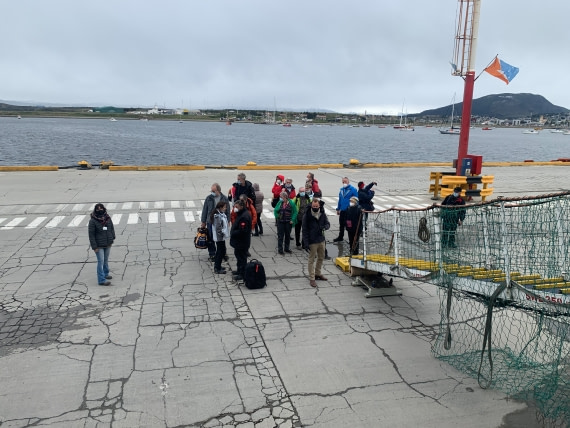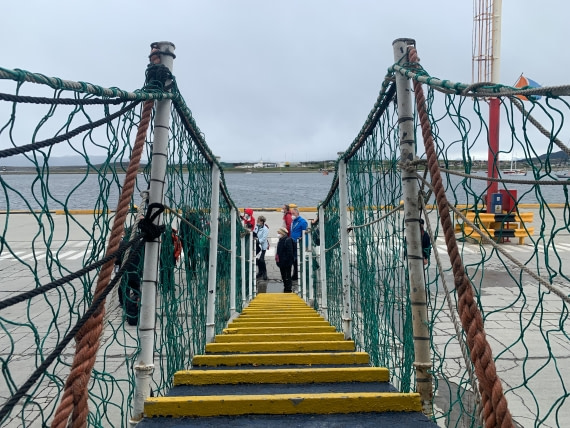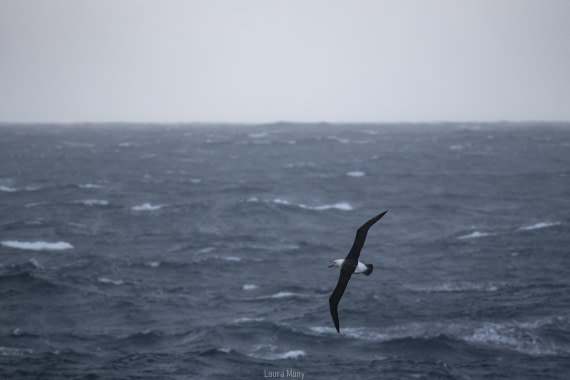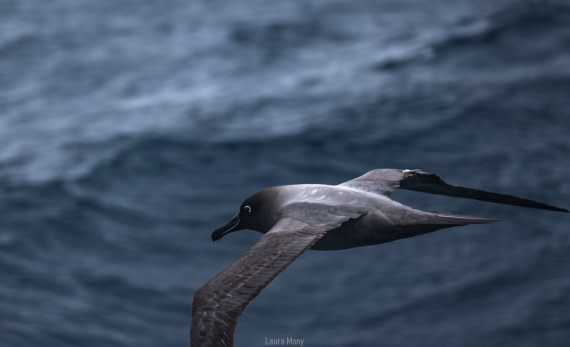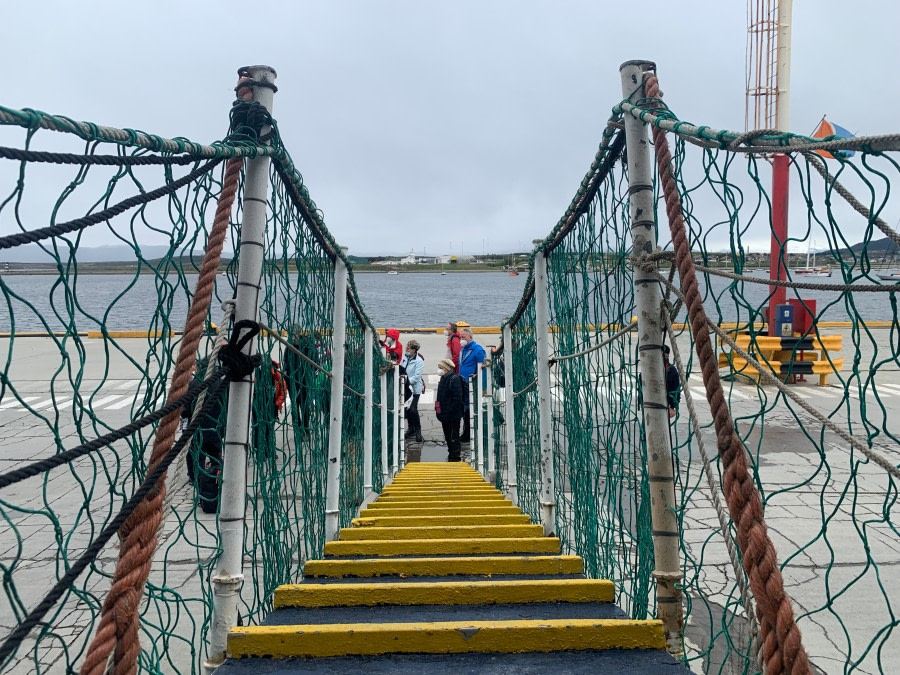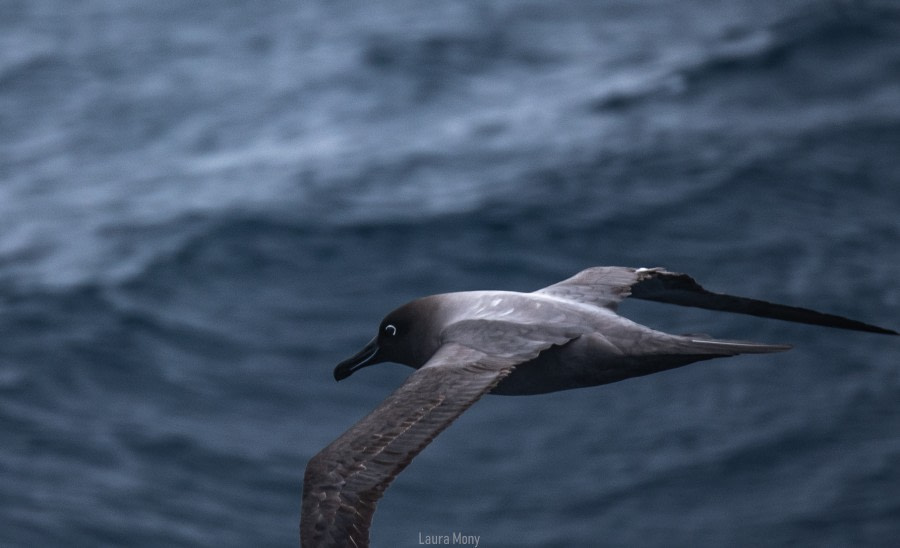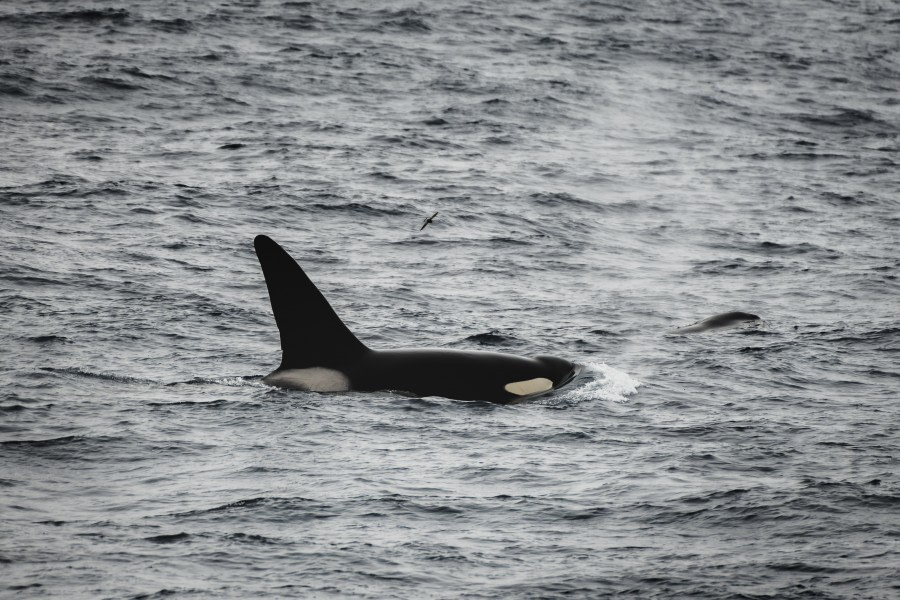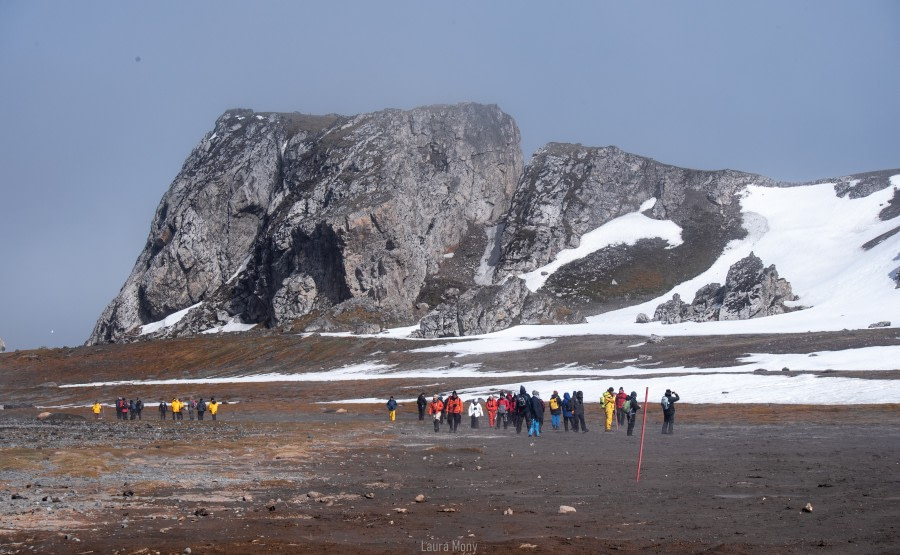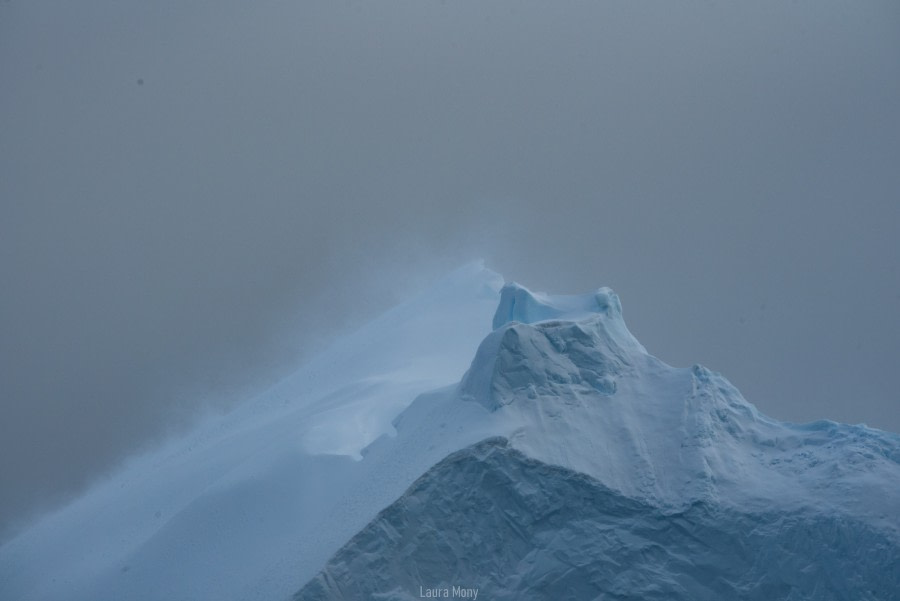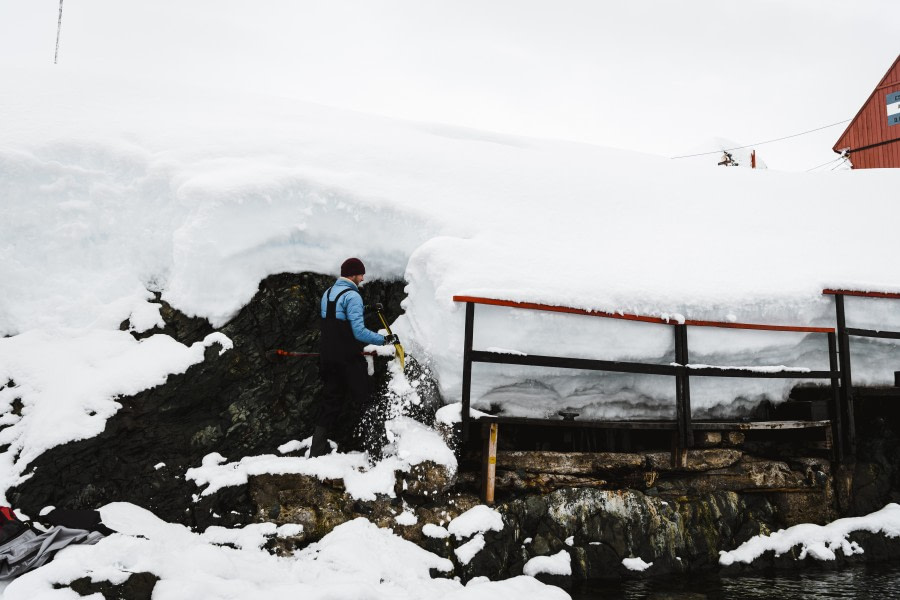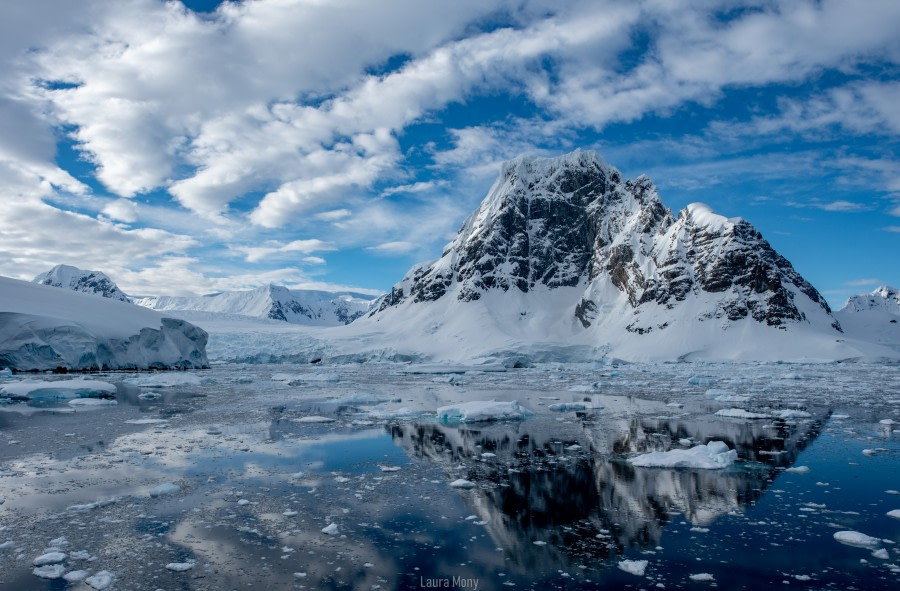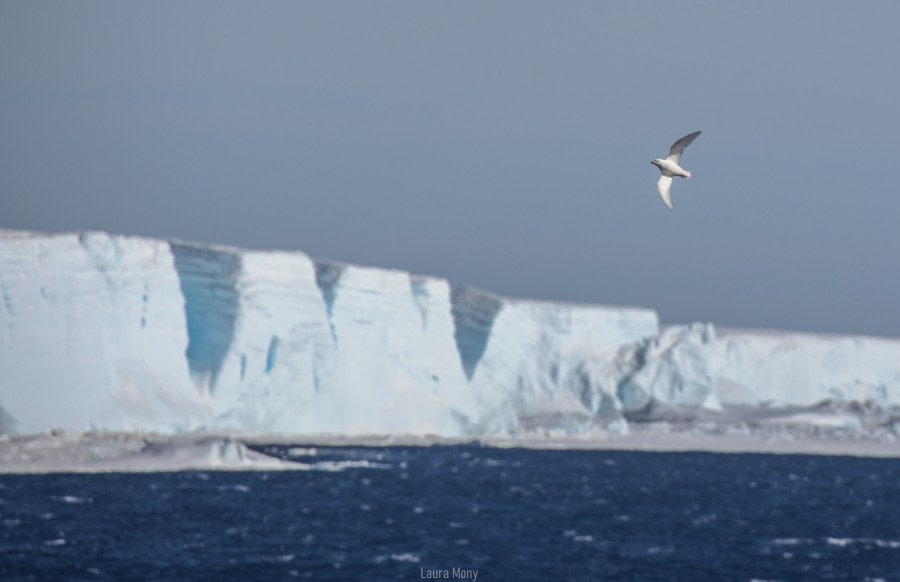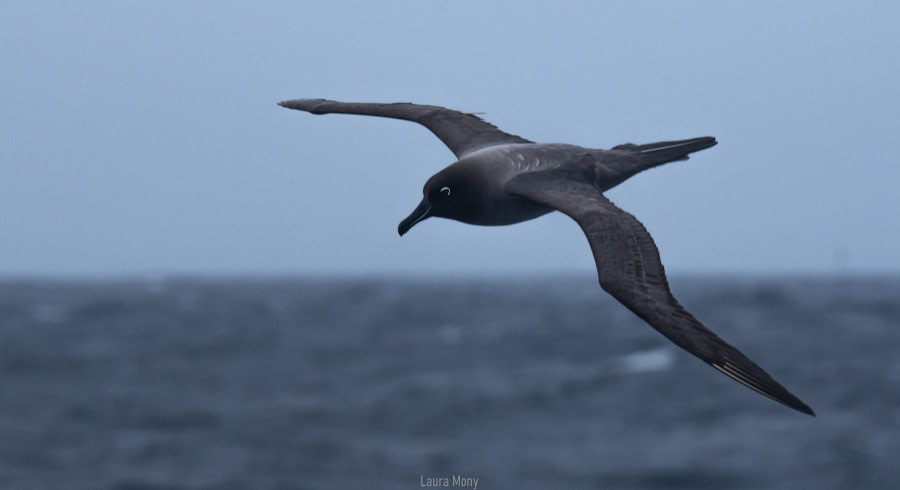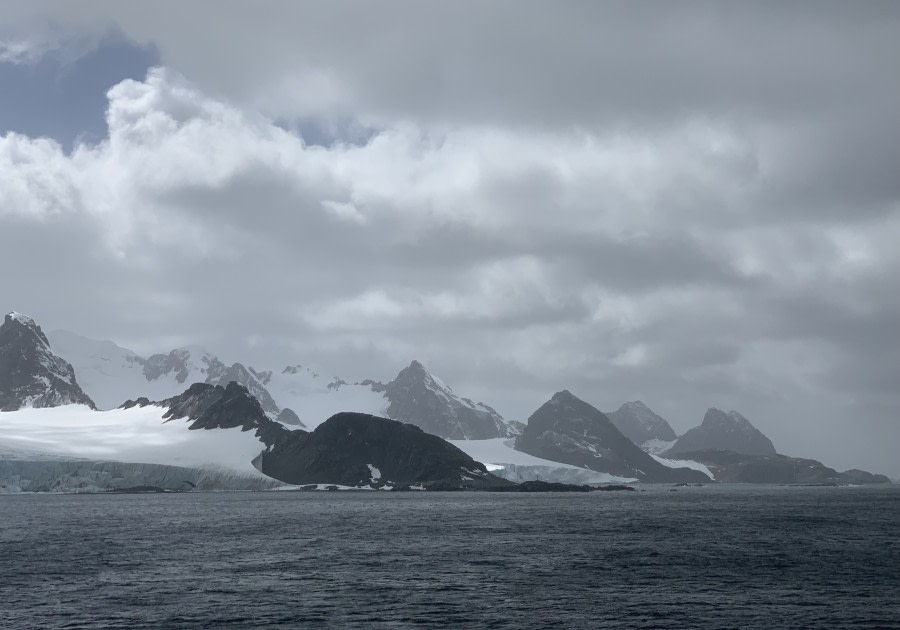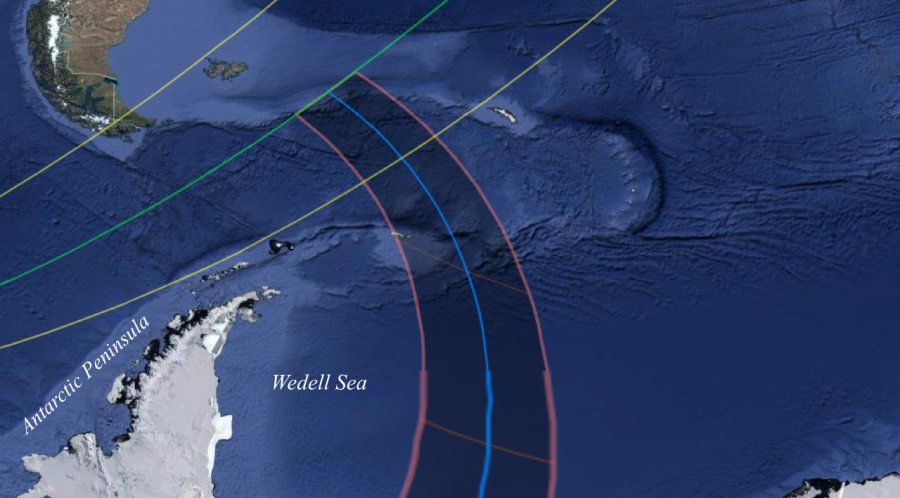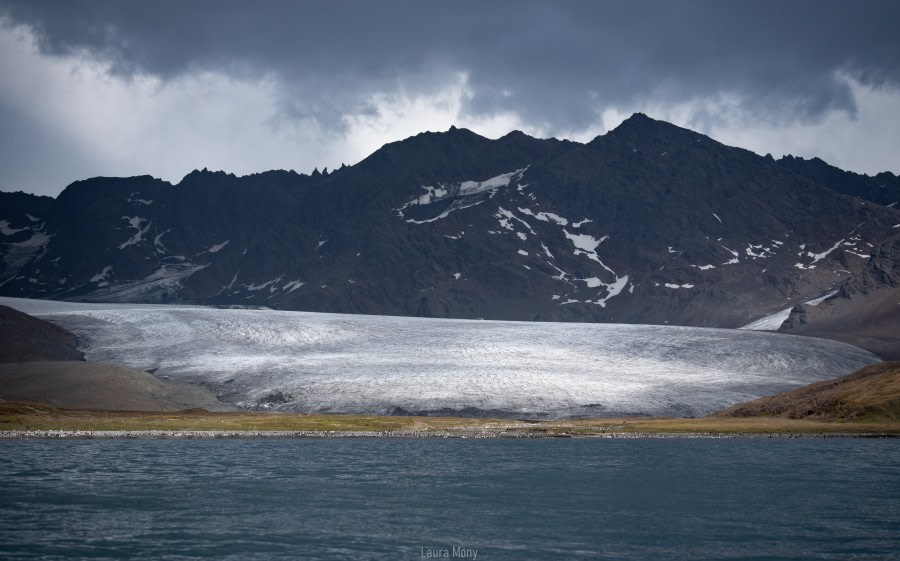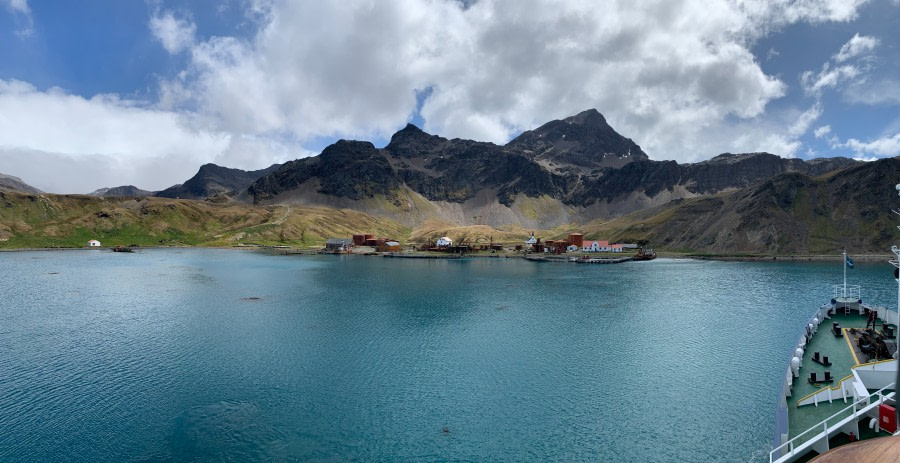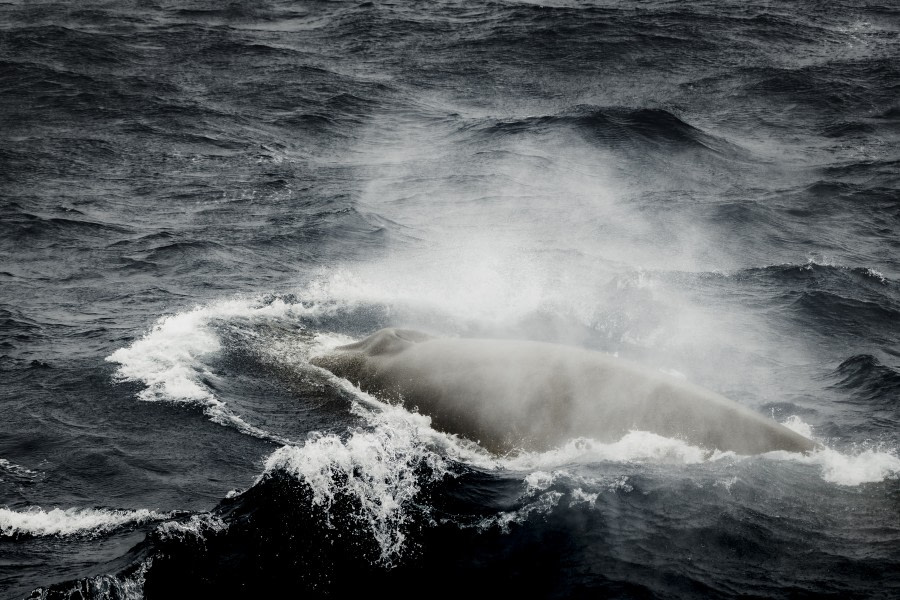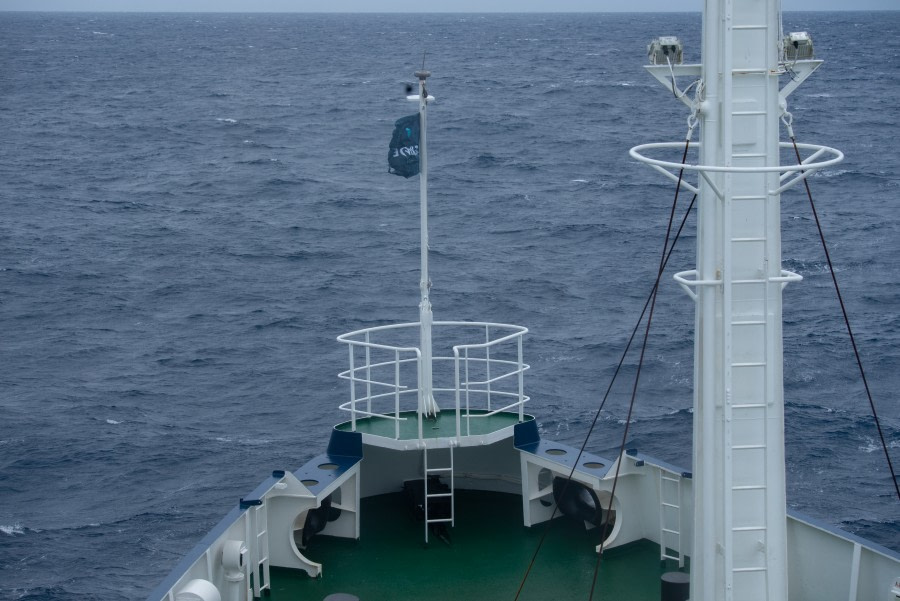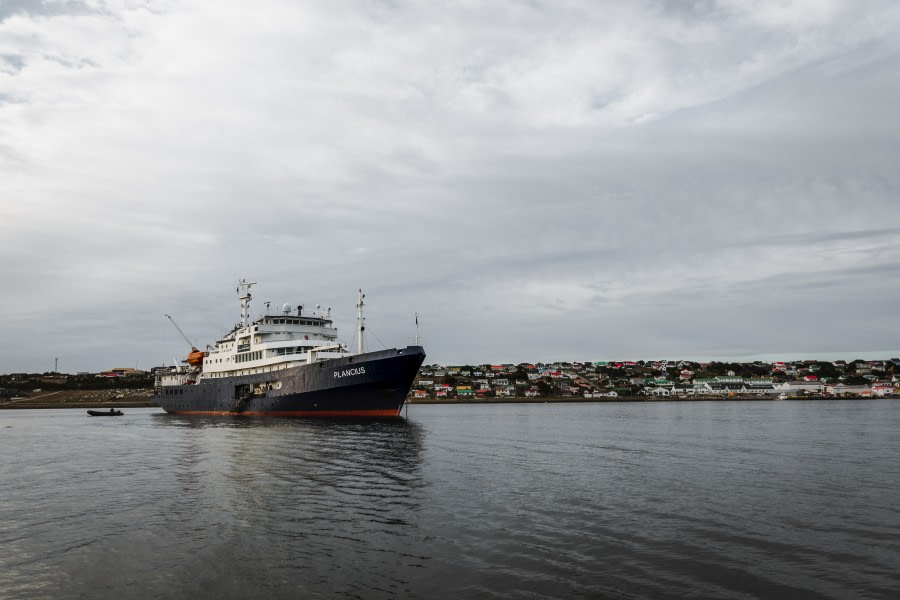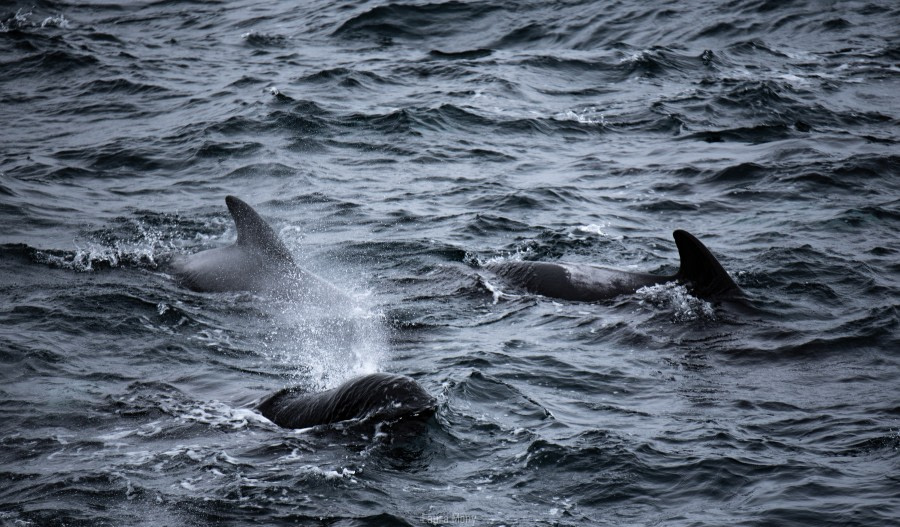| Date: |
07.12.2021 |
| Position: |
53°38.2’S / 036°30.1’W |
| Wind: |
N 7/8 |
| Weather: |
Overcast |
| Air Temperature: |
+4 |
After our adventures in South Georgia everybody was a bit tired, and our day started late, consequently, there was no wakeup call, only a short call for breakfast around 8am. As soon as we left South Georgia, the night before, we left the protection of the island and, shortly after 11pm, we started to feel the strong wind and the heavy confused swell of the open ocean. The morning was difficult for many of us and the crew since the ship was rolling and pitching heavily, given the state of the sea and the head winds. We continued to advance slowly at about 7-8 kts towards our next destination, the Falkland Islands, sailing along the northern edge of the Scotia Sea. Despite the movement of the ship, we had encounters with a few humpback whales and an amazing sighting of fin whales feeding. As we were a bit ahead of schedule, Captain took the time to turn the ship around and moved toward the beautiful marine creatures displaying captivating behaviors. We stayed a few minutes around the whales before heading back north, toward the Falkland.
Stormy and cold, the Scotia Sea is the area of water between Tierra del Fuego, South Georgia, the South Sandwich Islands, the South Orkney Islands, and the Antarctic Peninsula. For many, it is considered one of the wildest places on Earth. These groups of islands all sit on top of the Scotia Ridge, which frames the Scotia Sea on the north, east, and south, while the west border is framed by the Drake passage. The Scotia Sea covers an area of about 900,000 km2 (347,500 sq mi). About half of the sea stands above the continental shelf. It was named after the Scotia, the expedition ship used in these waters by the Scottish National Antarctic Expedition (1902-1904), under the command of William S. Bruce. In Argentina, the Scotia Sea is considered part of an area known as the "Mar Argentino". Despite the harsh conditions, the islands of the Scotia Sea do support vegetation and are described as the Scotia Sea Islands Tundra ecoregion. These areas do support tundra vegetation consisting of mosses, lichen, and algae, while sea birds, penguins and seals feed in the surrounding waters. The islands of the Scotia Sea also harbour wildlife such as four species of Albatross, five species of birds that remain in the islands, six species of penguins, and a similar number of seals. The Scotia arc is a very active geological region and earthquakes up to magnitude 7.7 have been registered recently, as well as volcanic eruptions.
During the day we had different lectures, four in total. One about the life and expeditions of Ernest Shackleton (in English and German) by Eduardo, one about Sea birds given by our expert birder and expedition leader Martin in English, one on Sea birds in German by Steffi and at the end of the day, one about Whaling in South Georgia, by Pippa. The lecture on Shackleton consisted of a brief account of the four trips that Shackleton undertook to Antarctica, on board the HMS Discovery, the Nimrod Expedition, the Endurance/Aurora expedition, and the Sch ackleton-Rwett Expedition. At the end, Eduardo talked about the conflicting opinions of explorers favoring or discrediting Shackleton's ability to organize expeditions. Both talks about birds showed how extraordinary these creatures are, traveling enormous distances across the Southern Ocean waters searching for food. We learned some incredible facts about the most significant species of birds that live in these waters. By the end of the day, in late afternoon, Pippa gave the last lecture of the day, a lecture about Whaling in South Georgia. Pippa's lecture was a brief account about the whaling operations that took place in South Georgia, referring to the scale of the operations which severely affected the population of whales in the South. Pippa gave cold facts about how populations declined and how many species, such as the blue whale, came close to extinction. This dark aspect of South Georgia’s past will haunt mankind forever and will be remembered as the time where mankind almost eradicated many cetacean species from Earth.
As we moved away from South Georgia, more and more birds were spotted around the ship. Throughout the day we had the chance to see a few Antarctic Prions (Pachyptila desolata), a kind of small petrels of the Southern Ocean. The wingspan of these birds varies from 17 to 20 cm and the body length is around 28 cm. Its under body parts are white and upper parts are blue gray, with a dark "M" across its back. It has a white eyebrow, blue-grey bill, and blue feet. These birds breed in large amounts in the islands of the Scotia Sea, the South Georgia, South Shetlands, South Sandwich, and South Orkney and in other subantarctic islands. Other more common birds such as Cape Petrel (Daption Capense), Wilson's Storm Petrel (Oceanites Oceanicus), Soft Plumage Petrel and Giant petrels (Macronectes giganteus) were spotted around. Late in the afternoon, while there was still light, we had the chance to watch an old wondering albatross flying around the ship. This one had a very white body with dark upper wings and white under wings. It flew around us as if he was wishing us safe journey.
